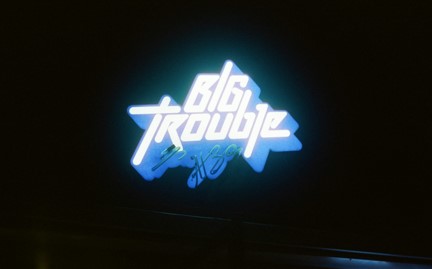We’ve learned about creating a shopper-centric experience on Amazon by optimising our product listing pages, titles and keywords. Now, how can we optimise our Amazon PPC advertising campaigns to bring the shoppers to us? It’s important to distinguish between the different advertising campaigns, their objectives, and methods for optimising efficiency.
As one of the most lucrative eCommerce platforms in the world, Amazon is inundated with brands and products striving for a place on the market. Having an effective Pay-Per-Click (PPC) advertising campaign on Amazon is crucial for visibility of our brand and products in searches. (Read more about how SEO works on Amazon). Organic ranking allows products to show up in a search naturally, while paid advertisements broaden the reach of our brand. Read our 3 part article series based on this post on LinkedIn: Part 1, Part 2, and Part 3.
Basics: Get the lay of the land with automatic SP campaigns
One of the first steps to take when beginning a PPC advertising campaign in a new Amazon marketplace is to start an Automatic Sponsored Products campaign. Sponsored Products (SP) campaigns are cost-per-click (CPC) ads that show individual product listings on Amazon and Amazon-affiliated apps and websites. SP campaigns target certain keywords, products (ASINs), categories and brands to show the product ad. In an automatic SP campaign, the Amazon algorithm matches the ads to shopping queries and ASINs. The only control the seller will have in an automatic campaign is the budget.
In our post, Creating a Shopper-Centric Experience on Amazon, we learned about the importance of a well-designed product listing page. With a strong basic foundation (basic content, title, keywords, images), automatic campaigns will do very well. This is because the Amazon algorithm will look at titles, bullet points, and keywords to match with shopper search queries.
After running the automatic SP campaign for at least 2 weeks, it’s time to look at the data from the Search Term report (accessed via Campaign Manager). This data will give insight on the best performing keywords or ASINs to target for manual SP campaigns. Armed with knowledge of the best keywords/ASINs, we can apply them to manual campaigns with confidence. Continue to run the automatic campaign, checking if there are certain keywords or ASINs that perform better over time. The more we understand how the campaigns perform over time, the better we can optimise the campaigns.
The basics, in a nutshell
Experimentation with automatic campaigns allows us to see what works best for our brand and products within that specific marketplace. In some marketplaces, certain keywords or products will attract more attention than others in other marketplaces. The data from the automatic campaigns becomes important when we start working with other PPC campaigns.
Beyond the basics: Diversify your PPC campaigns
The concept of the marketing funnel (based on the AIDA marketing model) helps us create a structured marketing strategy. This allows us to build brand awareness, put and keep the product(s) in the mind of our shoppers, and convince them to make a purchase. The final step in the funnel is to instil customer loyalty in the brand, which in turn increases conversions over time. Once we decide how much focus we want to place on branding and how much to focus on conversions, we can determine which PPC campaigns suit our purposes.
Diversifying our campaigns ensures visibility of our products and brand to shoppers at all stages of the marketing funnel.
Sponsored Products
In the previous section we used automatic SP campaigns to see how a product performs in its new Amazon marketplace, from visibility to conversions. Armed with data, we then created manual SP campaigns using the data from the automatic SP campaigns. 77% of sellers advertise via SP campaigns, but there are other types of sponsored ads available in the Amazon seller’s PPC advertising arsenal: Sponsored Brands (SB) and Sponsored Display (SD) ads. Understanding the different campaigns will help sellers diversify their marketing strategy to reach specific audiences and achieve specific marketing goals.
Sponsored Brands
Sponsored Brands (SB) campaigns are utilised by 39% of sellers primarily to increase brand awareness. There are three different ways to use SB ads: to showcase product collections (such as different colour variations of a scarf), to spotlight stores, and to highlight a particular product in a video. Product collection and storefront SB ads are visible as banners at the top and bottom of search result listing pages. Video SB ads are primarily visible within a search result listing page.
Sponsored Display
Sponsored Display (SD) campaigns retarget customers who have visited product listing pages, following them on and off Amazon. Off Amazon sites include Google, Facebook, Netflix, and some mobile apps. SD campaigns are only possible for sellers with a registered brand account. SD ads are frequently underused: approximately 30% of sellers use SD ads. However, they are extremely powerful because they touch on all stages of the marketing funnel via audience and product targeting. On Amazon, for example, SD ads can be found at checkouts showing thumbnail images of products in your browsing history. By showing ads externally, the products are kept on the mind of shoppers even when they are not shopping.
Summing up Amazon PPC campaigns
Applying the marketing funnel concept to Amazon marketing strategies results in campaign diversification, which in turn makes it harder for competitors to suppress the reach of ads.
| PPC Campaign | Goal | Appearance | Placement |
| Sponsored Products | Promotes individual products | Looks similar to organic search results (look for “Sponsored” at the top of the listing result) | Top of Search, Rest of Search, and on individual Product Listing Pages |
| Sponsored Brands | Promotes brand awareness via Product Collections, Store Spotlight, or Video ads | Ad banners that show multiple products or a single product video | Banners show up at Top of Search or at the bottom of Amazon search pages; video ads usually appear within search result listings |
| Sponsored Display | Targets shoppers on and off of Amazon | Individual product ads | On the sides of product listing pages, at checkouts, or search result listing pages on and off Amazon |
Once we have our campaigns running, the data available via Amazon’s backend analytical tools allows us invaluable insights into customer behaviour in our chosen marketplaces. This information helps us make data-driven decisions as we continue to refine our marketing strategy and optimise our advertising campaigns, which we cover in the last section of this article.
Playing the long game: Optimise your campaigns
Once the campaigns are in place, the goal is to collect data and control spending. The focus of the marketing strategy will ultimately be efficiency. Efficient campaigns will help you achieve your marketing goals (such as branding or conversions) over a long period of time. Playing the long game allows sellers to take into account healthy spending during peak and low periods in the marketplace. To collect data that truly reflects the market over time, it is necessary to keep campaigns running. Refine (optimise) the campaigns by controlling the spending.
As we saw in the beginning of this article, one such strategy harvests successful keywords from the automatic SP campaigns to be used in manual targeting (SP) campaigns. This creates a loop effect: when keywords are optimised, the algorithm will match the ads with the queries more effectively. By using more efficient keywords, the ads are shown more often to the most relevant audience.
Other strategies focus on different key performance indicators (KPI), such as advertising cost of sales, impressions, conversion rates, and click-through-rates.
Advertising Cost of Sales
Advertising Cost of Sales, also referred to as ACoS, shows the percentage of attributed sales spent on advertising. If we spend 10 euros to sell 100 euros worth of products, the ACoS = 10%, if we were to spend 1 euro to sell 100 euros worth of products, the ACoS = 1%. A 1% ACoS is much more efficient than a 10% ACoS because less is spent for higher revenue. Setting a target ACoS, however, depends on different factors including product category and branding, or if the product/brand is new or already established in a marketplace. The marketing goals also influence the target ACoS. Is the focus on increasing conversions, or raising brand awareness? Regardless of the marketing goal, it is important to set a budget and never go over the budget. It is wise to set the budget and the target ACoS before the start of the campaign.
Impressions
Impressions refer to the number of times an ad is shown to a shopper in SP and SB campaigns. Higher impressions indicate that product visibility has gone up and the ad has reached a broader range of shoppers. Ads with increased visibility help generate awareness about the brand and its products. The ads also help tell a brand story, which is important for reaching potential customers. With a consistent story that accurately reflects the brand, the ads help build trust and confidence in the brand. Using relevant keywords for your product help ensure the ads receive enough impressions for sales targets. Complementary keywords for products used alongside the one you’re advertising can expand reach of the ads. Amazon also suggests keywords based on shopper queries and ads for similar products. Search Term Impression Reports (accessed via Campaign Manager) provide data for understanding the effectiveness of certain keywords to drive impressions.
Click-through-Rate
Impressions show passive exposure to a brand and its products while the click-through-rate (CTR) shows how successfully an ad compels a customer to click on a product. The standard calculation is the number of clicks divided by the total impressions, which is then multiplied by 100. A higher CTR (0.5% and above) shows that an ad campaign is well-optimised. To increase the CTR, enhance your product titles, bullet points and product descriptions with relevant keywords. High-quality images that highlight the product, showcase it from various angles, and look appealing will generate a higher click rate. A well-refined and targeted campaign on Amazon can achieve a CTR rate of 2-3% or above.
Conversion Rate
The conversion rate (CVR) measures the number of conversions divided by the total size of the audience. Conversions are defined as the number of times a shopper completes an action. Such an action can be clicking on a product page, the storefront or actually making a purchase. CVR metrics combined with that of CTR, ACoS and ROAS (Return on Ad Spend) help sellers identify trends, patterns and areas for improvement. With this information, sellers can make more informed decisions and optimise their campaigns, including adjustments to bids and budgets.
Recap of campaign optimisation strategies
Optimising campaigns allow for the control of spending and collection of data over the long run. The most important optimisation strategy lies in the efficient use of keywords, which is crucial for visibility of ads. Once ads are visible, other optimisation strategies are dependent on the marketing goals – if the goal is to focus on branding, impressions and CTR are important strategies, while maintaining an efficient (low) ACoS will be less important. If the goal is to focus on conversions, watching ACoS and CVR will help determine the efficiency of a campaign. Less efficient campaigns mean going back to the basics, looking at the product listing pages and keywords.
Summary of navigating the Amazon PPC campaign journey
Creating great product listing pages, titles and keywords are the foundation of an effective Amazon marketing strategy. Once we determine if the focus of the marketing strategy will be more on branding (visibility) or conversions (sales), we’ll have a better idea of which PPC campaigns will help us achieve our goals. Utilising the marketing funnel helps us ensure that we diversify our campaigns, which in turn makes it harder for competitors to suppress the reach of our ads. Lastly, consistent optimisation of our campaigns lead to efficiency over the long run.
Need advice on the best Amazon strategy for your brand? Want more information about our tailored services? Contact us today!
Image credit: Growtika on Unsplash












